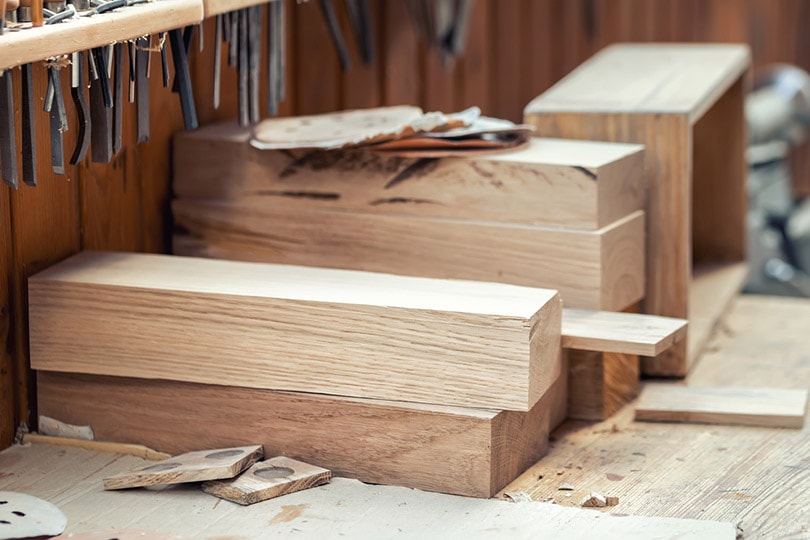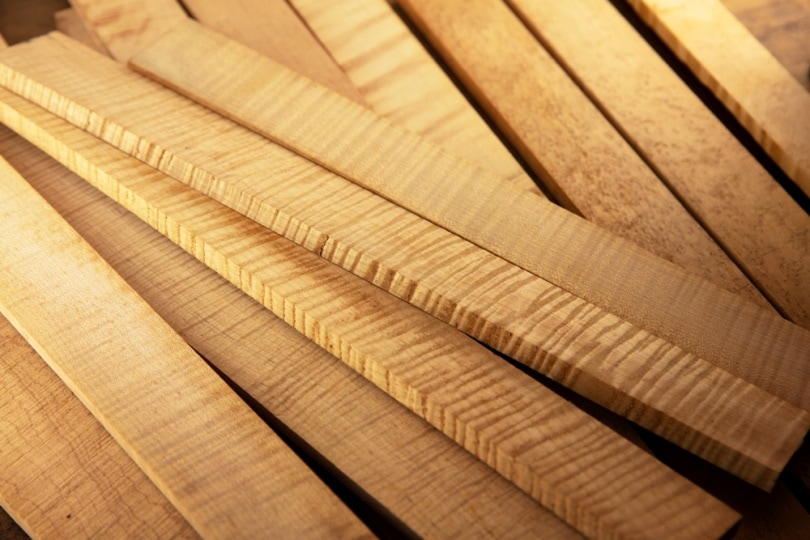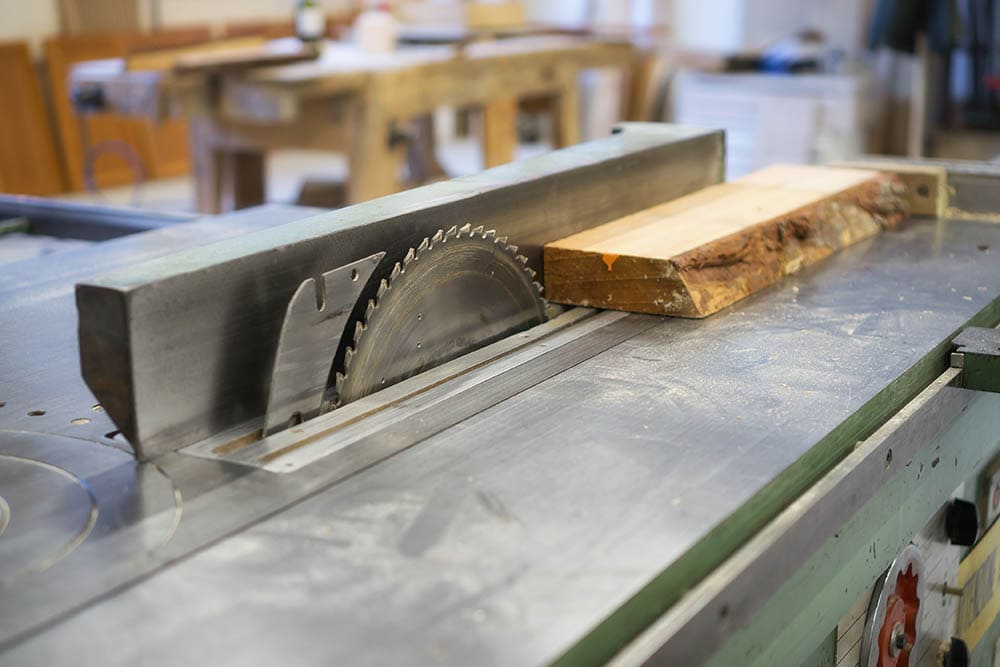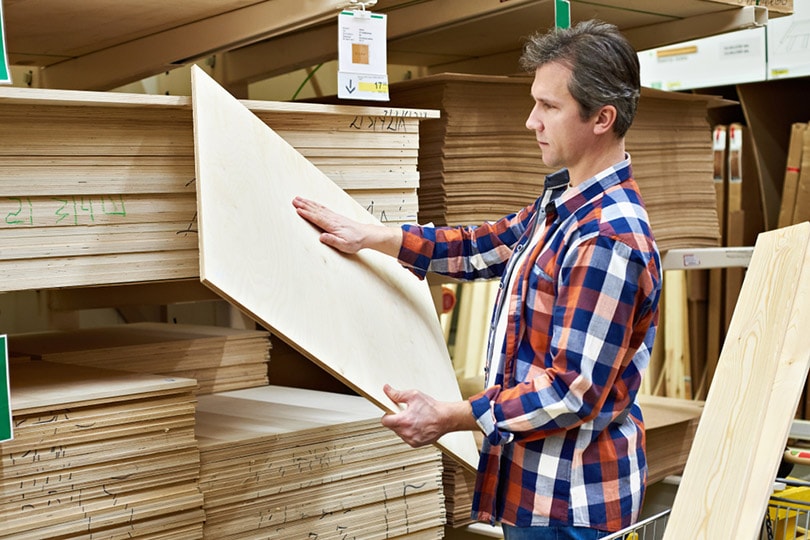How to Make Cabinet Doors in 9 Steps
-
Pete Ortiz
- Last updated:

Redoing the cabinet doors can be a great DIY project that has the power to transform the feel of your home in a big way. The feeling of pride you’ll get when you tell people you did them yourself is always really nice too. We’re going to look at a couple of wood-joining techniques that you can use to build a stunning set of shaker cabinet doors.
The only power tools you’re going to need are a table saw and a handheld drill. You can even rent them at most big box hardware stores if you don’t have one on hand. When it comes to saws and power tools, always ensure that you know how to use them and never do something you’re uncomfortable with. Let’s have a look at what we’re going to need:
How to Make Cabinet Doors in 9 Steps
1. Gather Supplies
At the heart of what we’re going to be doing is learning a couple of different ways to join wood, without the use of pinholes, nails, or screws. Seeing as you need a table saw no matter what, we’re going to discuss a different type of blade that you can put on it called a dado. If you don’t want to run out and grab one, you can still make these cuts, it’s just going to be more time and work.

2. Tools
- Table Saw: It’s nice to back this up with a circular saw as well if you have one, but you can make do without- we’ll elaborate below.
- Dado Blade: You don’t 100% need it, but it sure does help. This is a special blade for your table saw which allows you to cut wide grooves which are called dados. You also need the right throatplate that allows the wider blade-set through as well—an important detail.
- Drill: You’ll need a power drill with a hole saw attachment if you want concealed hinges.
- Glue: Wood glue of your choice—you’ll want to make sure it has a small nozzle to apply inside the thin grooves.
- Clamps: You’ll need a few clamps—the more the merrier. Bessy clamps, aka C-clamps, are perfect. Make sure that they are long enough to clamp the whole door. A couple of 4’ Bessy clamps will do.
- Tape Measure, Square, Pencil: The usual suspects. Always critical.
- Stain, Paint, etc.: This is a matter of personal preference. You don’t NEED to put anything on it if you don’t want to, but it does help protect the wood.
- Hammer, Chisel, Sandpaper: These are for the micro-adjustments to the fit and touch-ups.
Hardware
Whether you decide you would like to go with euro-style hinges or not is a matter of preference. Euro-style hinges do have a couple of benefits—they are concealed, and a little easier to install. The handles will again be a matter of personal preference. Any handles you pick up at your local hardware store will be easy to install and more than likely come with a set of instructions.
Lumber
You’re going to want to get straight pieces of 1×3 for your rails and styles. The rails are the horizontal pieces of our cabinet doors, and the styles are their vertical counterparts. It’s usually advisable to get your lumber from a supplier that will allow you to choose your own boards, that way you can sight the edge and pick out some good pieces.
Next, you’re going to need some quarter-inch plywood. You can pick some grade “A” or “B”, which is pricier but has been sanded down for a smoother finish which is nicer for painting. You don’t need to go that pricy if you don’t want to though, staining standard quarter-inch plywood brings out the grains and looks beautiful.
3. Rip Boards to Width
Using the regular blade on your table saw, set the fence to rip your 1x3s down anywhere from 2” to 2 ½”. While the standard size is 2¼”, the fun of doing it yourself is deciding how you want it to look. You’ll want to cut yourself a small test piece for the next step.

4. Creating a Groove
A standard saw blade has a thickness of ⅛ of an inch, half that of our plywood. To notch out a ¼-inch groove using the table saw is a simple trick. Set the height of the blade at ½-inch. Then, make your center mark on the end of your ripped down 1x3s. Now, set the fence of the saw so that the blade is just touching the line. If you’ve done the math, then you know what’s coming.
You’re going to make the groove by making 2 passes and flipping the board around on the second pass. Using the test piece, ensure that the fence is set correctly. Once you’re sure it’s good, notch all your boards.
5. Cut Rails and Styles to Length
When cutting the lengths of your boards it is critical to ensure that your take your time and make a square cut. If the lengths aren’t squared properly the cabinet will not come together in the end.
The styles are cut to length, but the rails will need an extra ¼-inch on each end. Take the time to make these cuts perfect. This is for the piece that will slot into the groove of the styles, which is called a tenon.

6. Cutting Tenons
This is where a dado blade set is going to come in handy. If you are fortunate to have one, then this next step is going to be a breeze. Install the dado. We’re going to leave that up to you, your table saw, and your dado manufacturer, but always be sure the set your buying is compatible. It’s a headache and even slightly embarrassing when you must go back to the hardware store and explain why you need to return it.
Next, it’s time to mark out the tenons. The tenon is going to be a tongue on each end of the rail, which is ¼-inch thick and protrudes ½-inch out. You’ll need to set the depth of your dado to exactly the height of the groove. Now, you also need to set up a sacrificial board on the fence of your table saw which sits over the dado. This is so you can run the end of the piece you’re cutting over the blade set and keep it butted square up against the board.
If you don’t have a dado, you can still cut the tenons with a regular blade and many, many more passes. Otherwise, the procedure is essentially identical. There’s nothing wrong with using a regular blade, but it can leave the edges a little rough and jagged. You can easily fix that if you need to—just touch them up with some sandpaper.
Test the fit and make any micro-adjustments necessary. The shoulders and end of the tenon should all merry up to the groove in the style with no gaps.
7. Cut Plywood to Size
This is where the circular saw comes in handy. If you’re cutting off a big piece, it’s good to cut it down to within an inch of the actual measurement first. Then, you can mill it more precisely on the table saw without dealing with ungainly, awkward, and dangerous cutoff pieces which can cause the blade to bind and kick.
Otherwise, you can use the table saw to get the plywood down to the size you need—it will just be a little more time-consuming.

8. Stain, Paint, or…Don’t
Once you have all your pieces milled and have done a dry-fit, it’s a good time to apply any stain or paint. You can always do it after assembly as well, so there is no rush. Many people like to leave them unfinished, but a nice stain can also really bring out the natural beauty.
9. Installing the Hardware
If you are going to install regular hinges, then that process is fairly straightforward. If you want to install inset hinges, you’ll need a router. Otherwise, layout the hinge positions, drill pilot holes for the screws (mind your depth) and screw the hinge on.
For euro-style concealed hinges, lay out the position of your hinges. These require a round inset which you will use the hole-saw to create. Always follow the manufacturers’ instructions regarding the dimensions. Then, use the hole saw attachment on your power drill. Make sure you mark out the correct depth on the side of the saw.
There are also specially made jigs for this purpose which you can purchase. Alternatively, you can make your own jig by taking a scrap piece of wood, laying out the pitch and depth of the holes on it, and clamping it to your cabinet door. Using the holes as your guide will assist in keeping the hole saw plumb as you drill, so you can focus on getting the depth right.
You can install the handles now if you wish or after the doors are hung. Waiting until after is often a good idea. That’s because there are often ergonomic things that we don’t think about. It’s not until we reach up or down to the cabinet, and realize hey, I might have liked to have that handle a couple of inches left or right, up, or down.
Once you’ve got your hardware on the cabinet doors, it’s time to hang them!
Conclusion
Updating your cabinet doors is a great way to freshen up the space at home. New cabinet doors instantly change the atmosphere—and there’s nothing like that distinct smell of fresh-cut lumber and glue that comes with new cabinets. It’s the home improvement version of that new-car smell.
With some basic carpentry and joinery knowledge and a few basic tools, you can save some cash and take pride in having built your own new cabinet doors. Happy building!
Featured Image Credit: Benoit Daoust, Shutterstock
Contents


